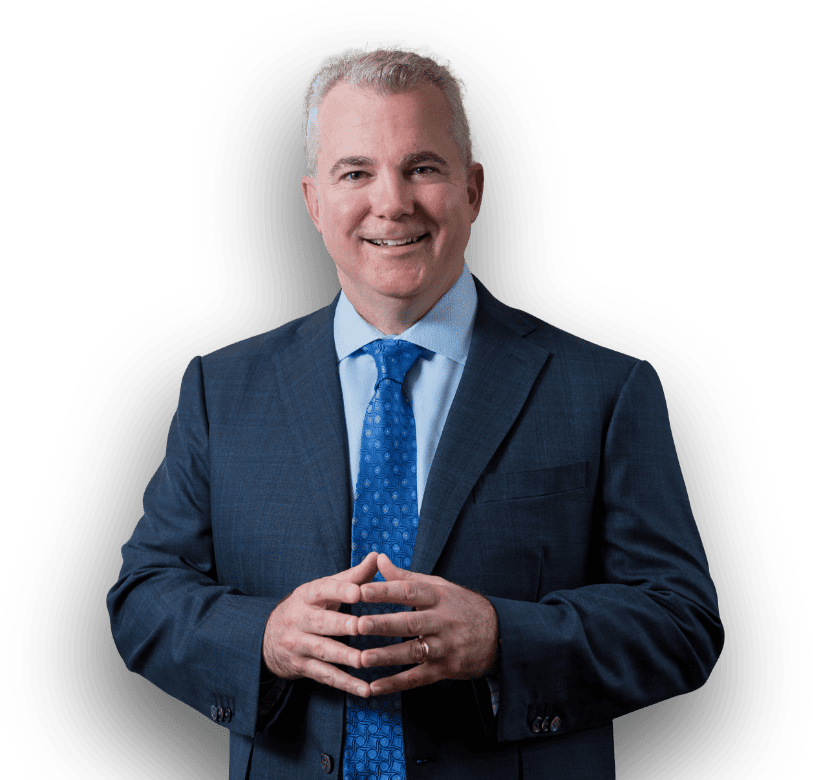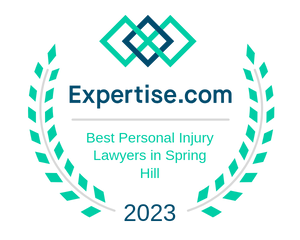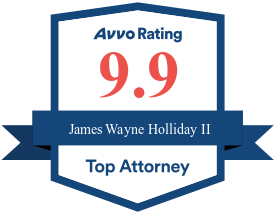T-Bone Accidents and Injuries in Florida
Motor vehicle accidents in Florida can cause more than frustration and interrupt your day. Serious collisions, including T-bone crashes between vehicles, can cause severe or life-threatening injuries to victims and cause devastating damage on the road.
After a T-bone crash, you may recover compensation. T-bone accidents can create legal issues over who is at fault and the amount of damages you may qualify for through a claim or lawsuit. A
Florida car accident attorney can answer your questions regarding the accident, discuss your injuries and your potential insurance claim.
What is a T-Bone Accident?
T-bone accidents are a common term for a side impact crash. T-bone refers to the angle at which the collision occurs between two vehicles, often resulting in the T-shape. In a side impact crash, the front end of a car strikes another vehicle directly on its side. Another term used to describe crashes of this type is an angle collision because another vehicle is not striking a car from the rear or head on but at an angle along the side of the vehicle.
T-bone crashes can cause catastrophic damages as they may occur at high speeds and involve a great deal of force and momentum when the collision occurs. T-bone accidents can also lead to rollovers, exacerbating the damages and the risk of injury to a victim.
High profile vehicles such as trucks and SUVs are at significant risk of a rollover in these types of crashes due to the impact location and the force in which the T-bone collision can occur. In contrast, if an SUV or truck strikes the other vehicle in a T-bone crash, the devastation can be great because of the size and weight of this vehicle compared to a lighter passenger vehicle such as a sedan.
How Common are T-Bone Accidents?
T bone crashes, also known as
angle collisions, are the leading cause of injuries and deaths in motor vehicle accidents in the U.S. Angle collisions surpass head-on crashes and rear-end collisions as the top accident scenario leading to injury and deaths of the parties involved. In one year, there are over 3.2 million accidents between motor vehicles resulting in injuries and over 17,500 deaths.
Of those incidents, side impact crashes account for nearly 1.7 million of accident injuries and 8,000 deaths of victims in the U.S. In Florida, there are over 100,000 individuals that suffer injuries in
intersection crashes and over 1,000 fatalities of victims.
What Factors Can Contribute to Injuries in a T-Bone Crash?
A side impact crash can potentially cause horrific injuries or endanger the victims’ lives. Those at the highest risk of injuries are the driver and vehicle occupants
hit from the side by another car. However, the vehicle’s driver and occupants colliding from their front end can also suffer significant injuries. The severity of injuries and whether a fatality can occur may depend on a combination of factors.
The Location of the Victim Within the Vehicle
The factor most likely to affect the level of injury a victim sustains in a side impact crash is where they are sitting in relation to the impact location in a T-bone crash. Those closest to the impact are likely to experience the brunt of the accident and thus have a higher risk of severe or life threatening injury.
Although others within the vehicle can also sustain injuries due to a side impact crash, anyone seated on the side where the collision occurs has a bigger chance of suffering major injuries that require emergency services and may require extraction from the vehicle, depending on the extent of the damage.
The Speed of the Vehicles
Speed plays a role in how hard the impact will be on a vehicle when a car strikes it from the side. The faster a vehicle is moving into the car at the time of the accident, the more widespread and severe the devastation to the car and the subsequent impacts that can occur.
For example, suppose a vehicle is traveling at a lower speed. In that case, it is less likely the force of the crash can cause a rollover or for the other vehicle to lose control and sustain impacts from other oncoming vehicles or strike objects at a distance from the location of the initial crash.
However, when a car travels at a moderate to severe speed when a side impact occurs with another vehicle, it is most likely to cause the other vehicle to roll over, tailspin, or slam into nearby cars, poles, concrete barriers or other objects.
Whether There Was a Secondary Force
If a vehicle sustains a T-bone crash, then experiences a subsequent impact or force, the likelihood of severe injury and death drastically increases.
Examples of a secondary force or impact can include:
- The vehicle itself rolled over uncontrollably.
- Another vehicle strikes the car when the impact throws the vehicle into traffic.
- The vehicle then strikes an object, such as a wall, concrete barrier, or pole.
The Size and Weight of the Vehicles Involved
Looking at cars on the road today compared to past decades, it is easy to identify a noticeable trend and difference in the number of
bigger vehicles on the roads. SUVs, trucks, pickups, vans and RVs are more common along roadways than prior years, and the higher rate of these vehicles on the streets puts those in smaller cars at a noticeable disadvantage if an accident occurs.
While those riding in larger and heavier vehicles are generally safer when an accident, including a T-bone crash, occurs, those traveling in a smaller sedan or micro car often experience the opposite effect. Any time a heavier and bigger vehicle strikes a smaller vehicle in a T-bone crash, the resulting damage and injuries to the occupants of the smaller car can be devastating.
The Most Common T-Bone Accident Injuries in Florida
The force on occupants’ bodies in a vehicle impacted from the side is significant. How the body absorbs the impact and loses control can result in severe or fatal injuries.
A side impact crash will likely leave victims hurting and needing medical attention. The pain and discomfort from the jolt of the crash, combined with the
injuries you may sustain, will likely leave you unable to work and require immediate medical treatment.
Victims of a T-bone crash may require hospitalization, surgery and other medical interventions to stabilize their injuries following a crash. Although many victims can eventually expect to heal and fully recover from their injuries, those involved in catastrophic accidents may die from their injuries or face life long disabilities.
A victim may sustain in a Florida T-bone accident may sustain:
- Traumatic brain injuries
- Spinal cord injuries
- Cuts and lacerations
- Broken bones
- Burns
- Crush injuries
- Loss of a limb
- Strains, tears or ruptures of ligaments, muscles or tendons
- Chest injuries
- Internal injuries to organs
Who is Usually at Fault in a T-Bone Crash?
Anything can play a factor in why and how an accident occurs. As in every car accident case, an insurance company or the court will determine which party’s negligence led to the crash and, in turn, the victim’s injuries and damages. As a victim of a crash, you must prove who caused the crash.
If you hire a car accident attorney, they can investigate the accident and use their resources to gather evidence such as video, experts or witnesses to help you prove the events leading up to the collision.
Typically in a T-bone or side impact crash, the party likely liable for the accident is the one that initiates the impact. T-bones most commonly occur in intersections, such as at a traffic light or when there is a stop sign. If a vehicle fails to yield to another vehicle’s right of way by running a light or failing to stop when necessary at a stop sign, then a side impact crash can occur when the vehicle traveling across strikes the vehicle crossing them.
What are the Common Causes of Florida Side Impact Crashes?
The cause of most T-bone crashes is the negligence of one of the drivers. In most cases, one of the drivers has the right of way while the other does not. The driver that fails to respect the other’s right of way is likely negligent. Negligence in a side impact accident can happen for any number of reasons.
When a driver fails to maintain focus on the road and fails to follow Florida traffic laws, they are more likely to end up in an accident, including the possibility of a T-bone crash.
Examples of negligent causes of T-bone collisions may include:
- Distracted driving
- Driving while under the influence of alcohol or drugs
- Speeding
- Failure to stop at a red light or stop sign
- Aggressive or reckless driving
Can You Get Compensation If You Suffer an Injury in a T-Bone Accident in Florida?
Florida is a no-fault state, and while that can impact how you seek compensation in your case, you are eligible to pursue compensation for your damages when you are a victim of a T-bone collision. The term no-fault can cause confusion for victims of a side impact crash.
As the victim, you must seek recovery through your insurance company, but who is at fault for the crash will still play a part in the type of compensation you can receive and the amount of compensation an insurance company may offer to settle your claim.
Damages for a T-bone accident may include:
- Medical-related losses - Medical bills for ER visits, doctor visits, rehabilitation, surgeries, hospitalizations, etc. Additionally, when you have permanent or long-term injuries, you can seek future medical losses after a side impact accident.
- Income related losses - Your income allows you to meet your financial expenses and responsibilities. However, an unforeseen crash can hamper your ability to work. When you cannot work, the income you lose out on is recoverable in a crash insurance claim. If your impacts on working continue for some time or you are unable to work at all in the future because of your injuries, then an attorney can help you seek compensation for future income earnings in your claim.
- Pain and suffering - The more severe your injuries from a T-bone accident, the higher the likelihood you will experience prolonged pain and suffering. Insurance claims and lawsuits allow victims to seek money to compensate them for the physical, emotional, and mental suffering and trauma they must endure following a crash due to negligence.
What Is the Statute of Limitations in Florida for a T-Bone Accident Case?
In Florida, motor vehicle accidents must follow the state’s
personal injury statute of limitations. A plaintiff that seeks damages must act within two years of their injuries to have a valid claim against the parties liable to you. If you contact a Florida car accident lawyer as soon as possible following a crash, they can help you ensure you stay within the statute of limitations in your case.
Should You Call a Car Accident Lawyer for a T-Bone Accident?
When a T-bone accident occurs in Florida, you should immediately call a lawyer. T-bone collisions can cause costly damages and injuries to a victim. You should not try to handle these significant insurance claims on your own as there is too much risk if the insurer denies your claim or makes an offer too low in your case.
By hiring a lawyer as soon as possible, you can prevent avoidable delays and problems that can interfere with your ability to demand compensation for your damages following a T-bone accident. A lawyer can help manage your case, build the evidence to prove your case and
communicate with the insurance companies and other parties on your behalf.
Contact a
Florida personal injury attorney for your free consultation. A lawyer can review your case and determine whether you may have a valid claim for damages following a side impact crash in Florida.
Schedule a Free Initial Consultation Today!
James Wayne Holliday
James Wayne Holliday has been practicing law since 1995. He has been named as a “Best Attorney” Lifetime Charter Member in Florida, an honor awarded to less than one percent of the nation’s lawyers.
Mr. Holliday has earned a reputation as a relentless trial lawyer because of his outstanding work ethic and thorough preparation of his cases for trial.
Author's Bio









